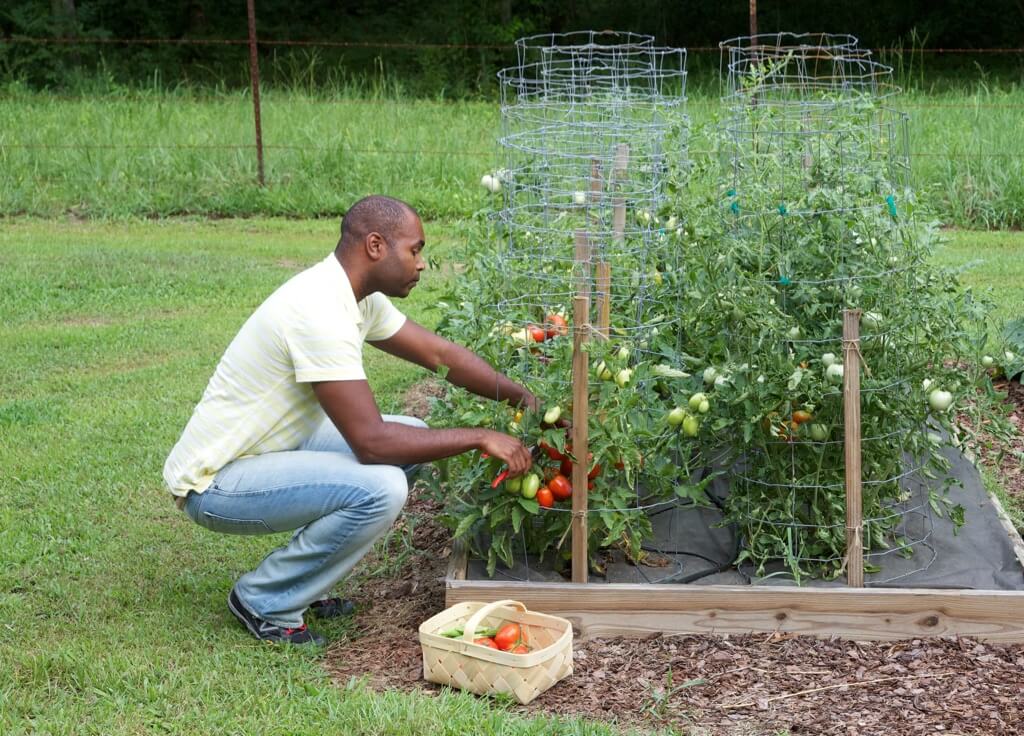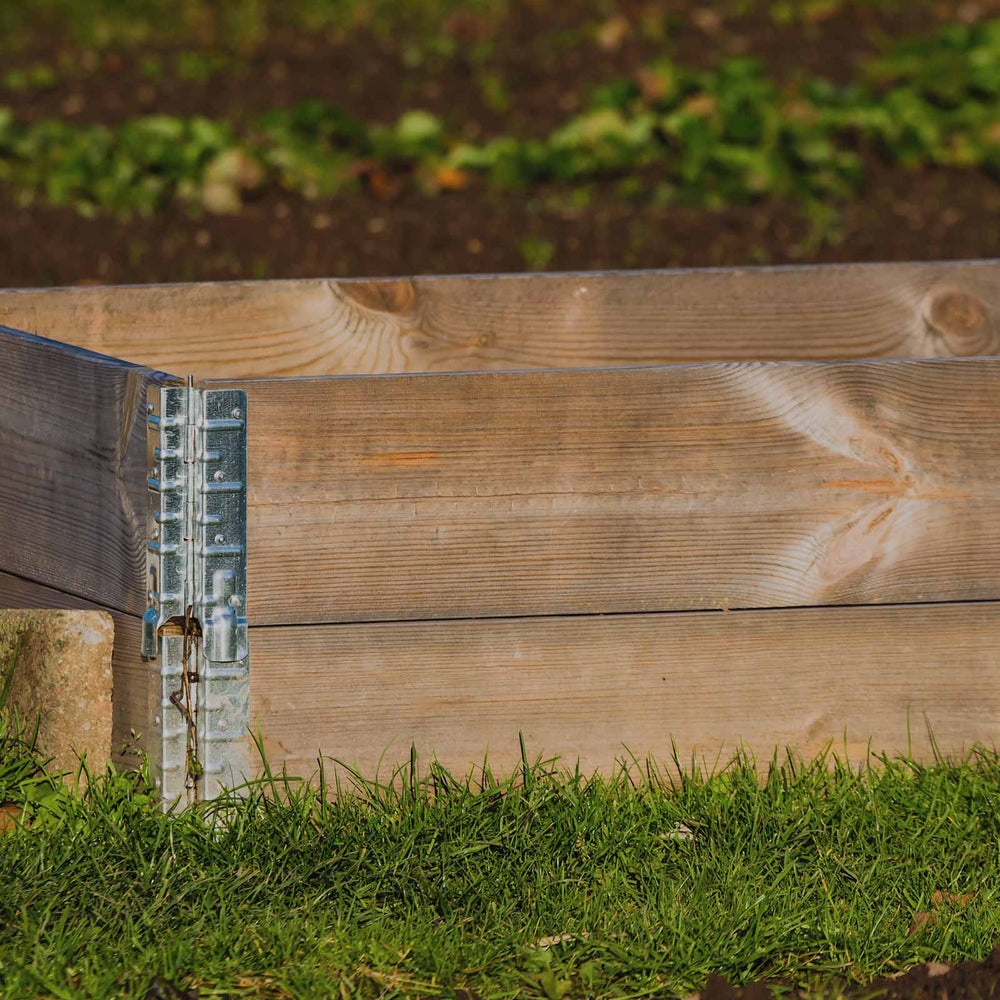Perhaps you're a new gardener, growing veggies and herbs for the first time. Maybe you've grown your own food for years, but your in-ground soil isn't great, or you just need a bit more growing space. Whatever the reason, here's one option worth considering: a raised garden bed. But what, exactly, is a "raised bed"? Well, it's just what the name suggests: an above-the-ground garden filled with soil. Because elevated soil warms earlier in the spring, you get a longer growing season, and because you get to control what kind of soil goes in the bed, you can provide the perfect environment for your plants' roots. Intrigued? We've got three easy ways to build a raised bed garden. First, though, let's talk about size.
Deciding the Size of Your Raised Bed Garden
There's no pre-determined size for raised bed gardens. You can create a small, 4′ x 4′ bed to grow a few vegetables and herbs, several much longer beds to grow food for your whole family, or anything in between. The only "rule" when building a raised bed is to keep the width at four feet or less, so you can easily reach into the center of the bed to plant, weed, or harvest without having to step on the soil. Also, to encourage strong root development, raised bed gardens should be at least 8 to 12 inches deep (more is better if you're planting deep-rooted plants like tomatoes).
The Most Popular Raised Bed: Wood Frame
There's a reason most raised beds you see are made of wood: They're durable, easy to assemble, and fairly inexpensive. To make one for yourself, start with high quality hardwood, like cedar, redwood, or oak, so your raised bed frame will last for years.

To build a 4′ x 4′ wooden raised bed:
- Cut two 8′ x 2″ x 12″ boards in half lengthwise—some home improvement stores will do this for you if you ask—and attach them at the corners with screws to form a square frame. (For best results, use 3½" deck screws and pre-drill the holes.)
- Place it in a sunny spot, leveling the ground if needed, and put down a few layers of newspaper or cardboard on the bottom of the bed before adding soil to smother grass or weeds.
- Fill the bed with Miracle-Gro® Performance Organics® Raised Bed Mix, made with organic ingredients and just the right weight and texture for raised bed growing.
- Add your Bonnie Plants®!
The Uber-Durable Raised Bed: Concrete Block
For an even easier and less expensive raised garden bed, consider using concrete (or cinder) blocks. With each block costing only about $1, concrete block raised beds provide a budget-friendly—but long lasting—option.
To create a 4′ x 4′ concrete block raised bed:
- Choose a flat, sunny site.
- Create a square using three 16″ cinder blocks per side (open sides facing up); if you want a taller bed, add a second layer.
- Lay cardboard or newspaper on the ground inside to smother grass and prevent weeds from growing. Or, if desired, create a liner inside the bed with landscape fabric.
- Fill the bed with Miracle-Gro® Performance Organics® Raised Bed Mix and your favorite Bonnie Plants.
The Super-Speedy Raised Bed: Straw Bale
When you use straw bales to create the walls of your raised bed garden, it will be done in very short order! They're also quite inexpensive, and a great choice if you're testing a new location for your vegetable garden and aren't ready to commit to something long-term.

To assemble an approximately 3′ x 6′ straw bale raised bed:
- Find a level spot that gets a lot of sun and create a rectangle by laying two bales end to end for the long sides, then a single bale for each short side.
- Lay cardboard or newspaper inside the space to smother grass and stymie weeds.
- Fill your new bed with Miracle-Gro® Performance Organics® Raised Bed Mix and plant it with Bonnie veggies and herbs.
Figure Out How Much Raised Bed Soil You Need
Remember math class? To find the volume of your new raised bed, multiple length x width x height. The answer will equal the number of cubic feet of soil you need to fill the bed. So, for example, if you've created a 4′ x 4′ x 1′ bed, you'll need 16 cubic feet.
Don't Forget to Feed
For best results and a big harvest, be sure to give your plants regular feedings with a continuous-release plant food designed especially for raised bed gardening, such as Miracle-Gro® Performance Organics® Raised Bed Plant Nutrition Granules. After all, your garden needs a steady source of nutrients, just like you do.
Now sit back and enjoy your new raised bed garden. Who knows? Maybe you'll create one of each type to see what works best for you. That's the beauty of raised beds: You can experiment and add more beds as your passion for gardening—and harvesting—grows right along with your plants.




 Herbs
Herbs
 Vegetables
Vegetables
 Fruit
Fruit
 Flowers
Flowers
 Succulents
Succulents


